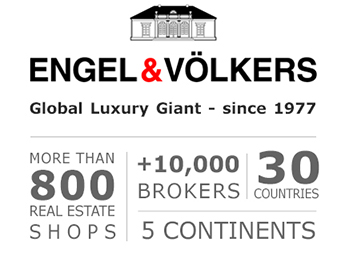Canada Condominium Statistics
Condominium dwellings in Canada
One in eight households lived in condominium dwellings, mostly located in a few CMAs
The 2011 National Household Survey (NHS) showed that 1,615,485 households (12.1%) lived (either as owners or renters) in condominiums. Of these households, 1,153,580 were owners while 461,215 were renters.
Just over three–quarters (76.8%) of households in condominiums were concentrated in ten census metropolitan areas (CMAs) (Table 1). The three largest CMAs in Canada—Toronto, Vancouver and Montréal—had the highest number of households in condominiums, accounting for more than half (53.5%) of Canadian households in condominiums.Note 1
Structure type of condominiums varied across CMAs
Condominiums consisted primarily of low–rise and high–rise apartment buildings,Note 2 and row houses. Just over one–third (36.3%) of condominium units were low–rise apartments, about one–third (30.9%) were high–rise apartments, and about one–fifth (22.9%) were row houses. Other structure typesNote 3 accounted for less than one–tenth (9.9%) of condominium units (Table 1).
From one CMA to the next, the types of structures that were condominiums varied. Among the ten CMAs with the most condominiums (Table 1), high–rise apartments represented more than half of condominiums in Toronto (67.4%). Low–rise apartments represented more than half of condominiums in Québec (69.5%), Montréal (64.2%) and Victoria (53.7%). Row houses represented more than half of condominiums in London (60.0%) and Hamilton (55.0%). In Vancouver, Calgary, Edmonton and Ottawa – Gatineau, no one structure type represented more than 50% of the condominiums.
High proportion of condominiums in newer dwellings, but single–detached houses represented the largest proportion of housing
Condominiums represented a higher proportion of recently built dwellings than of older ones. Among the ten CMAs with the most condominiums, about one in three (34.3%) occupied dwellings built between 2001 and 2011 were condominium units. For occupied dwellings built prior to 1981, less than one in ten (9.4%) dwellings were condominium units (Figure 1).
The higher proportion of condominium units in newer constructions was counterbalanced by the smaller proportion of non–condominium rental units. Of the dwellings built between 2001 and 2011, about one in ten (10.6%) was a non–condominium rental unit versus four in ten (41.2%) for dwellings built prior to 1981.
Even though condominiums represented a higher proportion of newer dwellings, single–detached houses represented the largest proportion of the occupied housing stock. Among the ten CMAs with the most condominiums, single–detached houses that were owner–occupied (but not a condominium) represented two–fifths (39.1%) of dwellings, while condominium dwellings (of all housing tenures) represented less than one–fifth (18.0%). Regardless of the period of construction, the proportion of single–detached houses was fairly constant (about 40%) and always larger than the proportion of condominiums.
Just over one–quarter of households in condominium dwellings were renters and not owners
Among the ten CMAs with the most condominiums, rented condominiums represented just over one–quarter (26.6% or 0.3 million) of condominium dwellings. Edmonton (35.2%) and Calgary (31.7%) had the highest proportions of renters in condominiums among the ten CMAs. Québec (30.9%) and Montréal (28.9%) had the next highest proportions. And, the proportion of renters among the other six CMAs ranged from 26.8% in Ottawa – Gatineau to 15.9% in Hamilton (Table 2).
Differences between condominium owners and other homeowners
In this section, data are presented for only owner households to provide insight into the role of condominiums in homeownership. Also, data are focused on the ten CMAs with the highest number of condominiums so that the comparisons reflect differences between condominium owners and other homeowners, instead of differences between areas with and without condominiums.
Non–family households made up the majority of owner households in condominiums
Non–family householdsNote 4 accounted for the highest proportion of households in condominium ownership—representing just under half of condominium owners (45.5%) [Figure 2]. In comparison, the proportion of non–family households in other owner–occupied dwellings was much smaller at 15.6%.
Couple–family householdsNote 5 (with or without children) made up the second largest proportion with 42.3% of households in condominium ownership. In contrast, about two–thirds (67.0%) of households in other owner–occupied dwellings were couple–family households.
Higher proportion of younger and older households in condominiums
Among condominium owners, the proportion of households with a primary household maintainerNote 6 aged under 35 years was about one in five (19.8%), compared to one in ten (10.5%) for other homeowners (Table 3).
The proportion of senior households, maintained by someone aged 65 years and over, was also higher for condominium owners at 26.1%, compared to 20.7% for other homeowners.
Condominium owners had a lower household total income
The average annual household total incomeNote 7 for condominium owners was more than $33,000 below that of their counterparts in other types of homeownership (around $80,000 per year versus $113,000 per year) [Figure 3].
While condominium owners had a lower household total income than other homeowners regardless of the age of the primary household maintainer, the difference was less for both younger and older households. Condominium owners in the 35 to 64 years age group had an annual household total income lower by $38,000 than other homeowners. For younger condominium owners (those with a primary maintainer aged under 35 years), it was lower by $24,000. For older condominium owners (those with a primary maintainer aged 65 years and older), it was lower by $12,000.
The average household total income for condominium owners and other homeowners varied across the ten CMAs with the highest number of condominiums. Calgary had the highest difference between condominium owners and other homeowners with an average household total income of $50,000 per year lower for condominium owners; while, Montréal had the smallest difference at $16,000 per year (Table 4).
Lower expected sale value and smaller size for condominiums
The average owner–estimated dwelling value reported by condominium owners was less than that of other homeowners. In the ten CMAs with the highest number of condominiums, the average amount expected by condominium owners if the dwelling were to be sold was $327,000, compared to $472,000 for other homeowners, a difference of nearly $150,000. The size of condominium units also differed compared to that of other dwellings. In 2011, owner–occupied condominiums had an average of 4.9 rooms compared to 7.6 for other owner–occupied dwellings (Table 4).
Among the ten CMAs, the differences in average dwelling value observed between owner–occupied condominiums and other owner–occupied dwellings varied. In the three largest CMA’s, the average owner–estimated dwelling value expected by condominium owners in Vancouver was $394,000 lower than for other homeowners ($437,000 versus $830,000); in Toronto, it was lower by about $216,000 ($325,000 versus $541,000); in Montréal, it was lower by about $63,000 ($269,000 versus $331,000).



 Canada Condominium Statistics
Canada Condominium Statistics 

